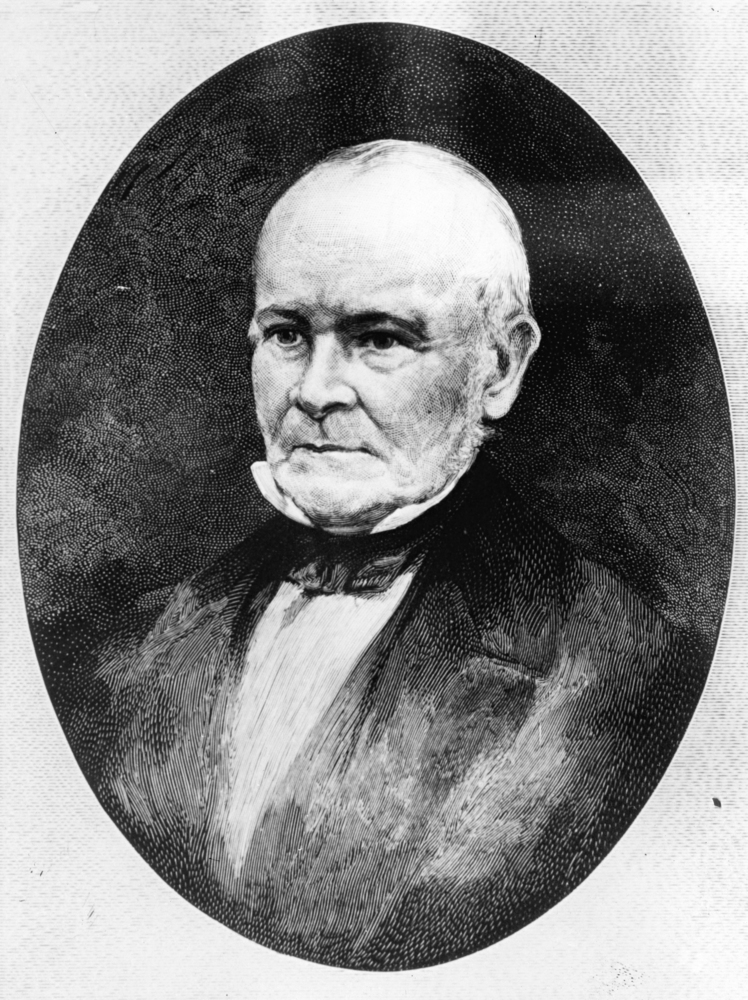Thomas Nuttall was one of the most enthusiastic and energetic of the early Oregon botanists. Although he arrived in Oregon country in 1834, some time after Lewis and Clark and David Douglas, he nevertheless made enormous contributions to our knowledge of the state's flora. Susan Delano McKelvey, author of Botanical Exploration of the Trans-Mississippi West 1790-1850, stated that Nuttall stands virtually alone among our early plant collectors, in terms of his scientific qualifications, his breadth of knowledge of plants derived from field experience, and his publication of his discoveries.
Thomas Nuttall was born in England in 1786. At fourteen, he was apprenticed to his uncle, a printer by trade, and simultaneously educated himself in botany and geology. At age twenty-two, he sailed to America, making his way to Philadelphia where he met Dr. Benjamin Smith Barton, a professor of natural history and botany at the University of Pennsylvania, and within months embarked on the first of numerous botanical collecting trips for his mentor. In 1810, he learned of Pacific Fur Company's Wilson Price Hunt expedition up the Missouri River to Oregon and traveled to St. Louis to join the party. Although he gained a reputation for reckless abandon and had a tendency to get lost, he was painstakingly careful with his collections. Nuttall traveled as far as the Mandan villages in North Dakota with this party.
Nuttall then went on to explore the Southeast, the Mississippi Valley, Arkansas, and Oklahoma. In 1825, he was hired by Harvard University as Professor of Botany and Ornithology. After nine years at Harvard, Nuttall was invited by Nathanial Wyeth to travel to the Pacific Ocean via the Columbia River. He resigned his professorship, gathered his plant presses, and headed to St. Louis to depart for the Northwest. Traveling with Wyeth was ornithologist John Kirk Townsend, who kept a journal of the expedition.
The Wyeth party crossed the Snake River on August 24, 1834, entering what is now Malheur County, Oregon. From there they traveled through the Blue Mountains toward the Columbia. By September 12, as the party neared Fort Walla Walla by canoe, the wind quickly rose to a heavy gale and, according to Townsend's journal, "...Mr. N(uttal)'s large and beautiful collection of new and rare plants was considerably injured ... ; he has been constantly engaged since we landed yesterday, in opening and drying them."
In Oregon, Nuttall and Townsend botanized along the Columbia, as well as up the Willamette as far as the falls. When the blooming season ended, Nuttall sailed for Hawaii, returning to the Columbia in April 1835 for a second season of exploration. He left the Northwest in October, sailing for Philadelphia where he worked at the Academy of Natural Sciences, naming his new species. In 1841, he learned of the sudden death of his uncle. As his uncle's heir, Nuttall was required by the terms of the will to live in England for nine months of each year, thus ending his explorations in America. He completed his monumental work on the trees of North America before taking up his inheritance.
Thomas Nuttall died in Lancashire in 1859 at the age of 73. In Oregon, he lives on in the name of our much-loved western flowering dogwood, named by John James Audubon, Cornus nuttallii.
-
![Thomas Nuttall.]()
Nuttall, Thomas, ba019666.
Thomas Nuttall. Oreg. Hist. Soc. Research Lib., ba019666
Related Entries
Related Historical Records
Map This on the Oregon History WayFinder
The Oregon History Wayfinder is an interactive map that identifies significant places, people, and events in Oregon history.
Further Reading
DeVoto, B. Across the Wide Missouri. Boston: Houghton Mifflin, 1947.
Graustein, JE. Thomas Nuttall; Naturalist Explorations in America 1808-1841. Cambridge: Harvard University Press, 1967.
McKelvey, Susan D. Botanical Exploration of the Trans-Mississippi West 1790-1850. Jamaica Plain: Harvard University Press, 1955. Reprinted by OSU Press, Corvallis, 1991.


